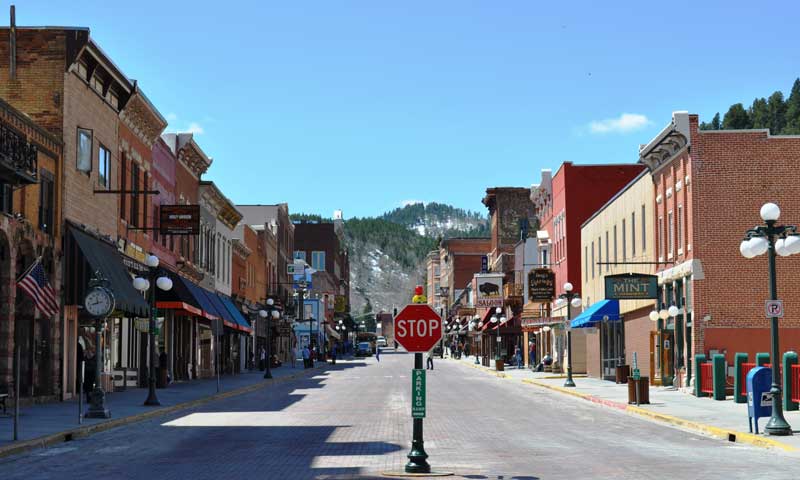The United States is full of excellent historical places to see. Our history here doesn’t just go back to the English colonization of the early to mid-1600s. European history in the United States goes back a century before that, to the early 1500s when Spanish explorers came and started colonizing. With such a long history, which comes with some famous events and people known all over the world, there are a lot of historical landmarks to see. Here are the top five iconic historical landmarks worth a road trip to visit, and see for yourself what our European forebears left behind.
Jamestown/Yorktown
Jamestown and Yorktown both played important roles in the founding of the United States. Today, they form part of one large “living museum” complex in Virginia that also encompasses Colonial Williamsburg. Jamestown was one of the earliest successful English settlements in North America, with English colonists arriving in 1607, a full 13 years before the Mayflower. Yorktown was the site of the winning battle for the Americans in the American Revolution. Today, you can see both places in a day, and enjoy some of the finest historical offerings in the nation.
Both sites have museums, with Jamestown having American and Native artifact museums. Yorktown has a preserved battlefield site. Both sites have educational areas where you can learn more about the sites and the things you will find there. Costumed actors are in both places, as well (including Native Americans at a working replica of a Powhatan village at Jamestown), telling you the story of what it was like there in those days, from the perspective of people who were really there. If anything is like stepping into a time machine, the Jamestown/Yorktown settlements are it. – Learn More
Salem
Salem is best known in American history as being the site of the Salem Witch Trials of 1692 (it was actually the neighboring Salem Village, now present-day Danvers, where the trials took place, but the town of Salem gets all the glory). You will find many monuments to the witch trial victims in Salem, as well as some tourist-y “witch” museums and other witch-themed attractions. But, Salem has a history going back decades before the witch trials, being one of the earliest English settlements in Massachusetts.
You will find what are called “first-period” houses here, which were built during the 1600s, most of which have the names of the original owners on the fronts. They are private homes, but you can see early American architecture by looking at the outsides of them and also get an idea of where people lived during that time. There are several historic cemeteries in Salem, where you may find some of your New England ancestors. The Salem public library has an excellent genealogical collection that includes ancient documents. You can even visit the famed House of the Seven Gables, which was the inspiration for Nathaniel Hawthorne’s novel of the same name.
A quick side trip to neighboring Danvers will give you the Rebecca Nurse house, which is a house that belonged to one of the more famous witch trial victims. You can tour the house every season except winter, and also go to the cemetery in the back where the Nurse family, including Rebecca, are buried (along with another witch trial victim, George Jacobs, whose remains were found on his family farm in the 1800s and moved to the Nurse cemetery for historical purposes). – Learn More
- Site of Salem Witch Trial Hangings Discovered: Why It’s Important to Genealogists
- Witches in the Family? Resources for Researching the Families of the Salem Witch Trials
Washington, D.C.
Our nation’s capital is full of historic landmarks, which makes it a landmark unto itself. Going to Washington, D.C. is a true journey into American history. There is the White House, of course, which began being a residence with our second president, John Adams. Adams’s wife, Abigail, famously hung her laundry to dry in one of the front rooms of the house, because it was still undergoing construction when they moved in. The U.S. Capitol building, the Supreme Court building, the U.S. Mint, the Jefferson monument, Lincoln Memorial, and Washington Monument are all there. You can see many American historical treasures at the Smithsonian, which comprises many differently themed museums within walking distance of each other. Plus, there are the almost perfectly preserved homes of presidents Washington and Jefferson at Mt. Vernon and Monticello. Take a walk with our founding fathers and mothers by spending some time in Washington, D.C. – Learn More
Deadwood
This small town in South Dakota is the embodiment of the iconic American Wild West. It was one of the first permanent outposts west of the Mississippi River and is remembered for its anarchic beginnings. Deadwood started out as a town with no laws, where anything could and did happen without consequence, and where only the people who dared lived there had any say in what went on in the town. It wasn’t under U.S. jurisdiction for decades. Yet, it was on the forefront of technology in a lot of ways, having a telegraph office and the first cross-country telephone service besides the White House. Famous Wild West historical figures like Seth Bullock, Charlie Utter, Wild Bill Hickock, and Calamity Jane called Deadwood home and are buried there. The town today is a living shrine to those old, wild pioneer times, and is well worth a visit. It’s like stepping back in time. – Learn More
St. Augustine











